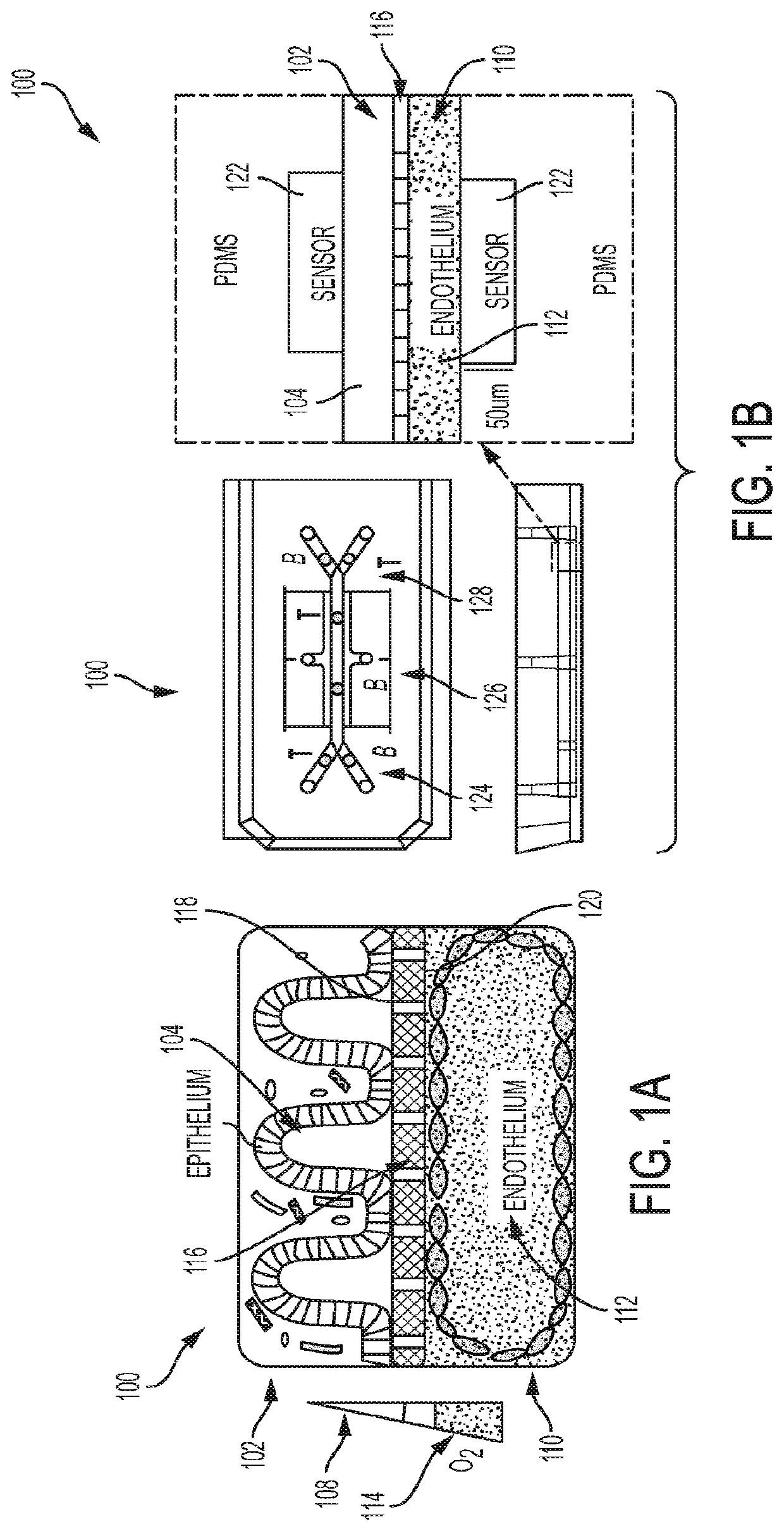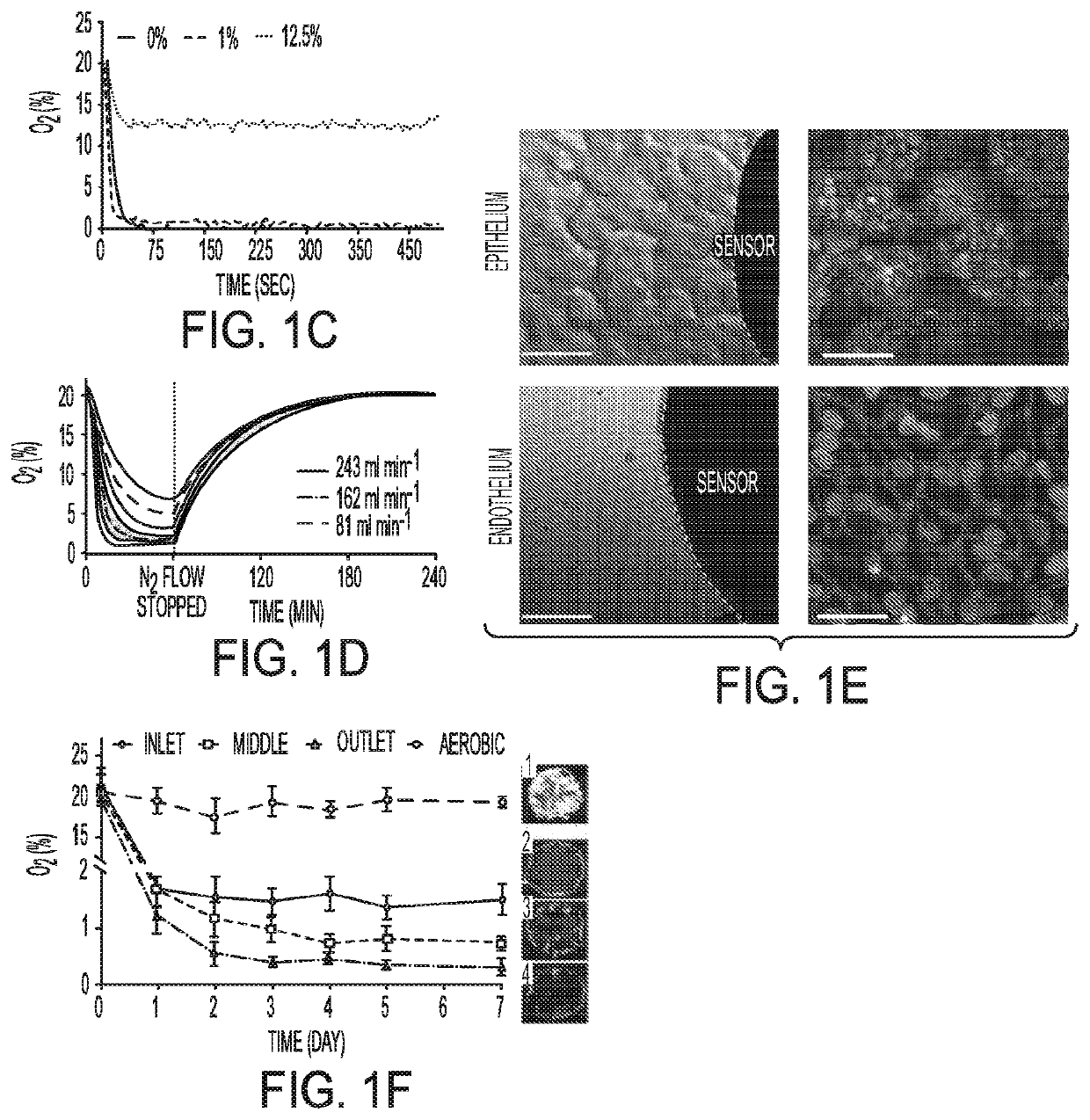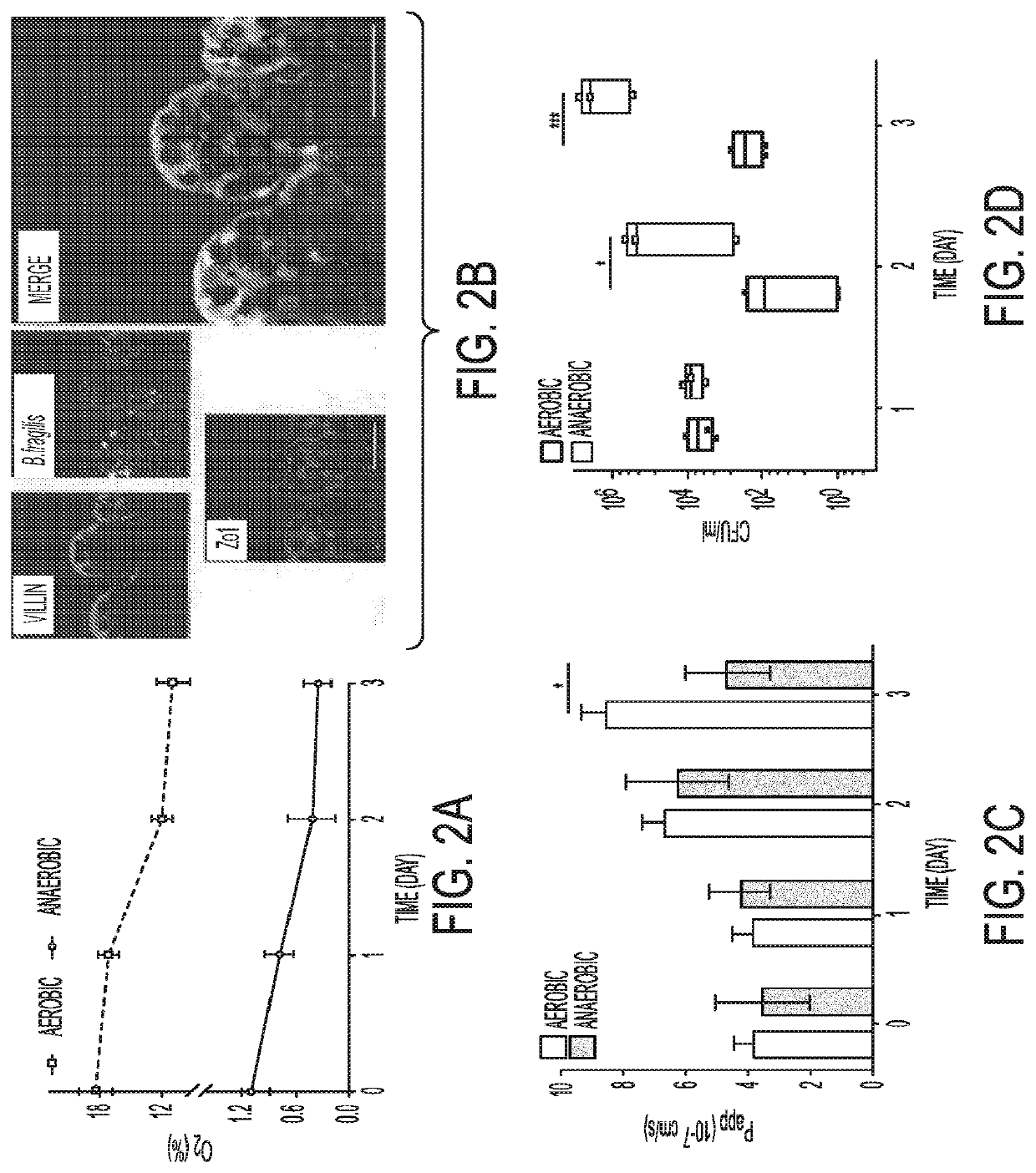Complex Human Gut Microbiome Cultured In An Anaerobic Human Gut-On-A-Chip
a human gut microbiome and anaerobic technology, applied in the field of complex human gut microbiome cultured in anaerobic human gutonachip, can solve the problems of cell injury and death, inability to sustain these complex microbial communities in direct contact with living human intestinal cells in vitro, and limited oxygen gradients with below the luminal oxygen level required
- Summary
- Abstract
- Description
- Claims
- Application Information
AI Technical Summary
Benefits of technology
Problems solved by technology
Method used
Image
Examples
Embodiment Construction
1]As used herein, the phrases “linked,”“connected to,”“coupled to,”“in contact with” and “in communication with” refer to any form of interaction between two or more entities, including mechanical, electrical, magnetic, electromagnetic, fluidic, and thermal interaction. For example, in one embodiment, channels in a microfluidic device are in fluidic communication with cells and (optionally) a fluid reservoir (or other components). Two components may be coupled to each other even though they are not in direct contact with each other. For example, two components may be coupled to each other through an intermediate component (e.g. tubing or other conduit).
[0262]“Channels” are pathways (whether straight, curved, single, multiple, in a network, etc.) through a medium (e.g., silicon, plastic, etc.) that allow for movement of liquids and gasses. Channels thus can connect other components, i.e., keep components “in communication” and more particularly, “in fluidic communication” and still m...
PUM
| Property | Measurement | Unit |
|---|---|---|
| thickness | aaaaa | aaaaa |
| thickness | aaaaa | aaaaa |
| diameter | aaaaa | aaaaa |
Abstract
Description
Claims
Application Information
 Login to View More
Login to View More - R&D
- Intellectual Property
- Life Sciences
- Materials
- Tech Scout
- Unparalleled Data Quality
- Higher Quality Content
- 60% Fewer Hallucinations
Browse by: Latest US Patents, China's latest patents, Technical Efficacy Thesaurus, Application Domain, Technology Topic, Popular Technical Reports.
© 2025 PatSnap. All rights reserved.Legal|Privacy policy|Modern Slavery Act Transparency Statement|Sitemap|About US| Contact US: help@patsnap.com



